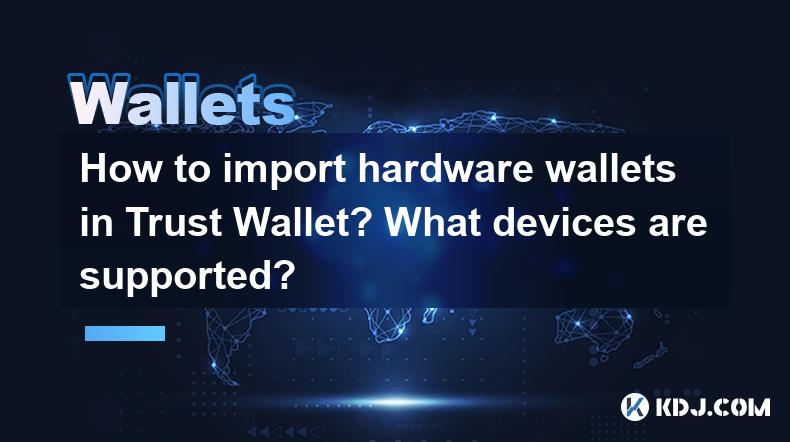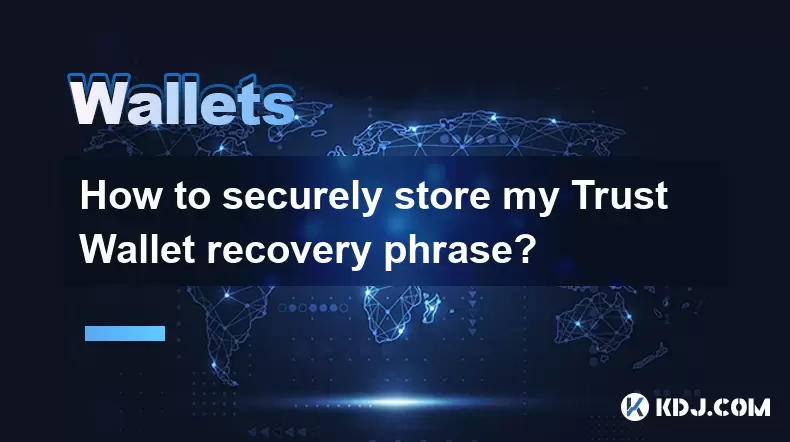-
 Bitcoin
Bitcoin $114200
0.00% -
 Ethereum
Ethereum $3637
0.56% -
 XRP
XRP $2.950
-2.01% -
 Tether USDt
Tether USDt $0.9999
0.02% -
 BNB
BNB $761.0
0.55% -
 Solana
Solana $164.1
-1.38% -
 USDC
USDC $0.9999
0.02% -
 TRON
TRON $0.3332
0.36% -
 Dogecoin
Dogecoin $0.2012
-0.52% -
 Cardano
Cardano $0.7261
-1.41% -
 Hyperliquid
Hyperliquid $37.62
-2.13% -
 Stellar
Stellar $0.3930
-2.65% -
 Sui
Sui $3.441
-0.16% -
 Bitcoin Cash
Bitcoin Cash $563.8
0.70% -
 Chainlink
Chainlink $16.50
0.09% -
 Hedera
Hedera $0.2424
-0.14% -
 Ethena USDe
Ethena USDe $1.001
0.01% -
 Avalanche
Avalanche $22.20
0.00% -
 Litecoin
Litecoin $118.0
-2.48% -
 UNUS SED LEO
UNUS SED LEO $8.991
0.12% -
 Toncoin
Toncoin $3.195
-3.87% -
 Shiba Inu
Shiba Inu $0.00001217
0.12% -
 Uniswap
Uniswap $9.674
-0.21% -
 Polkadot
Polkadot $3.633
1.00% -
 Monero
Monero $295.3
-0.82% -
 Dai
Dai $0.9999
0.00% -
 Bitget Token
Bitget Token $4.321
-0.41% -
 Cronos
Cronos $0.1392
0.73% -
 Pepe
Pepe $0.00001027
-0.89% -
 Aave
Aave $258.5
0.32%
How to import hardware wallets in Trust Wallet? What devices are supported?
Trust Wallet enhances digital asset security by supporting hardware wallets like Ledger and Trezor, allowing users to manage cryptocurrencies with added protection.
May 07, 2025 at 05:35 am

Trust Wallet, a popular mobile cryptocurrency wallet, supports the integration of hardware wallets to enhance the security of your digital assets. By connecting a hardware wallet to Trust Wallet, users can manage their cryptocurrencies with an added layer of protection. In this article, we will guide you through the process of importing hardware wallets into Trust Wallet and discuss the supported devices.
Supported Hardware Wallets
Trust Wallet supports several hardware wallets, ensuring users have a variety of options to secure their assets. The currently supported hardware wallets include:
- Ledger Nano S
- Ledger Nano X
- Trezor One
- Trezor Model T
These devices are widely recognized for their security features and are compatible with Trust Wallet, allowing users to manage their cryptocurrencies seamlessly.
Preparing Your Hardware Wallet
Before you can import your hardware wallet into Trust Wallet, you need to ensure that your device is set up correctly. Here are the steps to prepare your hardware wallet:
- Connect your hardware wallet to your computer using the provided USB cable.
- Install the necessary software for your hardware wallet. For Ledger devices, you will need to install Ledger Live, and for Trezor devices, you will need to install Trezor Bridge and the Trezor Suite.
- Initialize your hardware wallet. Follow the on-screen instructions to set up your device, which typically includes generating a recovery seed phrase. Make sure to write down and securely store your recovery seed phrase, as it is crucial for recovering your wallet if needed.
- Install the necessary cryptocurrency apps on your hardware wallet. For example, if you want to manage Bitcoin, you need to install the Bitcoin app on your Ledger or Trezor device.
Connecting Your Hardware Wallet to Trust Wallet
Once your hardware wallet is set up, you can proceed to connect it to Trust Wallet. Here's how to do it:
- Open the Trust Wallet app on your mobile device.
- Tap on the "Settings" icon in the bottom right corner of the screen.
- Scroll down and select "Wallets."
- Tap on the "+" icon in the top right corner to add a new wallet.
- Select "Hardware Wallet" from the list of options.
- Choose your hardware wallet brand (Ledger or Trezor).
- Follow the on-screen instructions to connect your hardware wallet to Trust Wallet. This typically involves confirming the connection on your hardware wallet device.
Managing Your Cryptocurrencies with a Hardware Wallet in Trust Wallet
After successfully connecting your hardware wallet to Trust Wallet, you can manage your cryptocurrencies securely. Here's how to use your hardware wallet within Trust Wallet:
- Navigate to the main screen of Trust Wallet.
- Select the cryptocurrency you want to manage.
- If you have multiple wallets set up, make sure to select the one connected to your hardware wallet.
- You can now send and receive cryptocurrencies using your hardware wallet. When sending, you will need to confirm the transaction on your hardware wallet device.
Security Considerations
Using a hardware wallet with Trust Wallet significantly enhances the security of your digital assets. However, it's important to follow best practices to maintain this security:
- Always keep your hardware wallet firmware up to date. Manufacturers regularly release updates to fix security vulnerabilities.
- Never share your recovery seed phrase with anyone. This phrase is the key to your wallet and should be kept confidential.
- Use a strong PIN or password to protect your hardware wallet. This adds an extra layer of security in case your device is lost or stolen.
- Regularly back up your Trust Wallet app data. While your hardware wallet secures your private keys, backing up your app data ensures you don't lose any transaction history or other important information.
Troubleshooting Common Issues
Sometimes, users may encounter issues when trying to connect their hardware wallet to Trust Wallet. Here are some common problems and their solutions:
- Connection Issues: Ensure that your hardware wallet is properly connected to your computer and that the necessary software is installed and running. If you're using a Ledger device, make sure Ledger Live is closed before connecting to Trust Wallet.
- App Not Installed: If Trust Wallet cannot detect the necessary cryptocurrency app on your hardware wallet, make sure you have installed the correct app on your device.
- Firmware Outdated: If your hardware wallet's firmware is outdated, you may encounter compatibility issues. Update your firmware to the latest version to resolve this.
Frequently Asked Questions
Q: Can I use multiple hardware wallets with Trust Wallet?
A: Yes, Trust Wallet allows you to connect multiple hardware wallets. You can add each wallet separately following the steps outlined in the "Connecting Your Hardware Wallet to Trust Wallet" section.
Q: Is it possible to use a hardware wallet with Trust Wallet on a desktop?
A: No, Trust Wallet is a mobile application and does not have a desktop version. To use a hardware wallet with Trust Wallet, you must use the mobile app on your smartphone or tablet.
Q: What happens if I lose my hardware wallet?
A: If you lose your hardware wallet, you can still recover your funds using the recovery seed phrase. Make sure to keep this phrase in a secure location. You can then use this phrase to restore your wallet on a new device and reconnect it to Trust Wallet.
Q: Can I use a hardware wallet to store NFTs in Trust Wallet?
A: Yes, you can use a hardware wallet to store NFTs in Trust Wallet. The process of connecting and managing NFTs is similar to managing other cryptocurrencies, with the added security of your hardware wallet.
Disclaimer:info@kdj.com
The information provided is not trading advice. kdj.com does not assume any responsibility for any investments made based on the information provided in this article. Cryptocurrencies are highly volatile and it is highly recommended that you invest with caution after thorough research!
If you believe that the content used on this website infringes your copyright, please contact us immediately (info@kdj.com) and we will delete it promptly.
- Binance, CZ, and the FTX Fallout: The $1.8 Billion Question
- 2025-08-06 18:30:12
- Brendan Rodgers, Celtic, and the Greg Taylor Role: A Tactical Conundrum
- 2025-08-06 18:50:12
- Coinbase Stock, Investment, and Earnings: Navigating Crypto's Tides
- 2025-08-06 18:55:54
- DALPY Coin: Investor Buzz Swirls Around Upcoming 'Game-Changing' Features
- 2025-08-06 18:30:12
- BlockchainFX: Your Ticket to 1000x Crypto Gains in '25?
- 2025-08-06 19:30:12
- Dogecoin Price, Technical Indicators, and Trader Sentiment: A NYC Perspective
- 2025-08-06 19:35:12
Related knowledge

How to add TRC20 token to Trust Wallet?
Aug 04,2025 at 11:35am
Understanding TRC20 and Trust Wallet CompatibilityTrust Wallet is a widely used cryptocurrency wallet that supports multiple blockchain networks, incl...

How to securely store my Trust Wallet recovery phrase?
Aug 06,2025 at 07:14am
Understanding the Importance of Your Trust Wallet Recovery PhraseYour Trust Wallet recovery phrase, also known as a seed phrase or mnemonic phrase, is...

How to change the currency in Trust Wallet?
Aug 06,2025 at 07:14pm
Understanding Currency Display in Trust WalletTrust Wallet does not allow users to change the base currency used for valuation in the same way traditi...

Why am I receiving random tokens in my Trust Wallet (dusting attack)?
Aug 06,2025 at 10:57am
What Is a Dusting Attack in the Cryptocurrency Space?A dusting attack occurs when malicious actors send minuscule amounts of cryptocurrency—often frac...

What is a watch-only wallet in Trust Wallet?
Aug 02,2025 at 03:36am
Understanding the Concept of a Watch-Only WalletA watch-only wallet in Trust Wallet allows users to monitor a cryptocurrency address without having ac...

Why can't I connect my Trust Wallet to a DApp?
Aug 04,2025 at 12:00pm
Understanding DApp Connectivity and Trust WalletConnecting your Trust Wallet to a decentralized application (DApp) is a common process in the cryptocu...

How to add TRC20 token to Trust Wallet?
Aug 04,2025 at 11:35am
Understanding TRC20 and Trust Wallet CompatibilityTrust Wallet is a widely used cryptocurrency wallet that supports multiple blockchain networks, incl...

How to securely store my Trust Wallet recovery phrase?
Aug 06,2025 at 07:14am
Understanding the Importance of Your Trust Wallet Recovery PhraseYour Trust Wallet recovery phrase, also known as a seed phrase or mnemonic phrase, is...

How to change the currency in Trust Wallet?
Aug 06,2025 at 07:14pm
Understanding Currency Display in Trust WalletTrust Wallet does not allow users to change the base currency used for valuation in the same way traditi...

Why am I receiving random tokens in my Trust Wallet (dusting attack)?
Aug 06,2025 at 10:57am
What Is a Dusting Attack in the Cryptocurrency Space?A dusting attack occurs when malicious actors send minuscule amounts of cryptocurrency—often frac...

What is a watch-only wallet in Trust Wallet?
Aug 02,2025 at 03:36am
Understanding the Concept of a Watch-Only WalletA watch-only wallet in Trust Wallet allows users to monitor a cryptocurrency address without having ac...

Why can't I connect my Trust Wallet to a DApp?
Aug 04,2025 at 12:00pm
Understanding DApp Connectivity and Trust WalletConnecting your Trust Wallet to a decentralized application (DApp) is a common process in the cryptocu...
See all articles

























































































